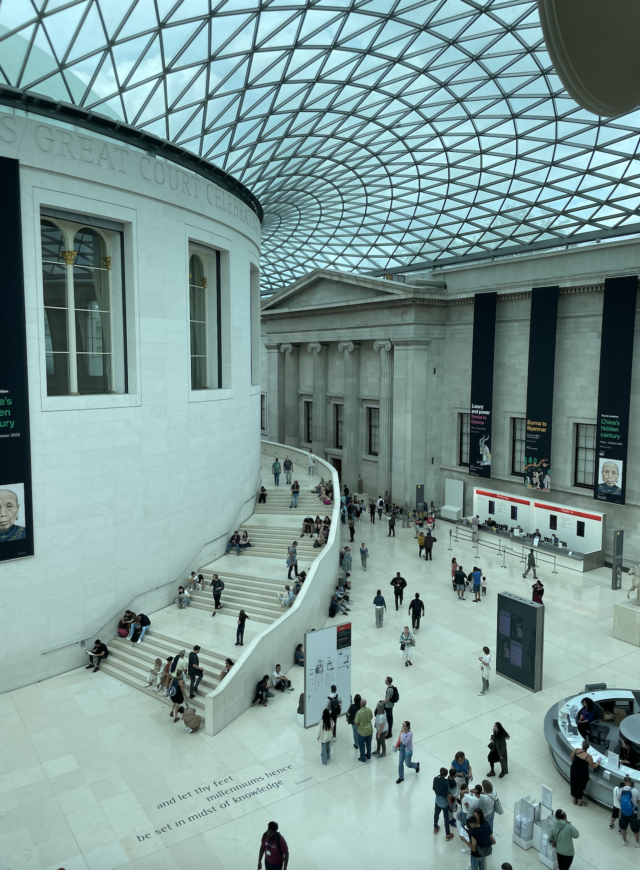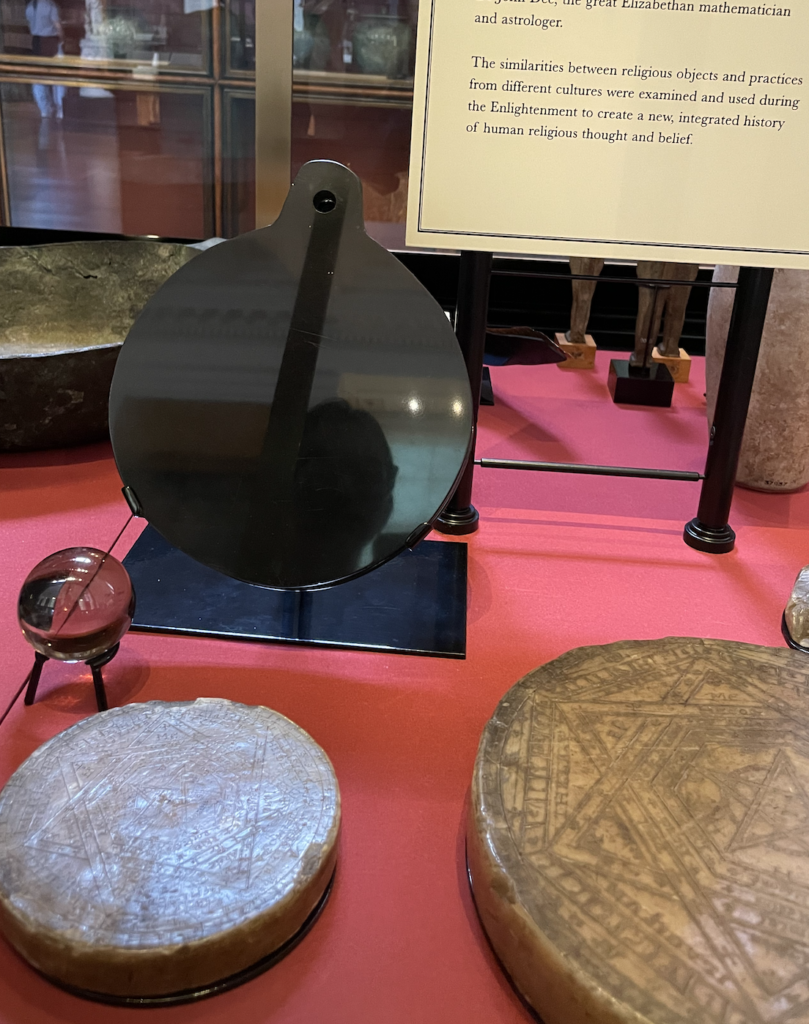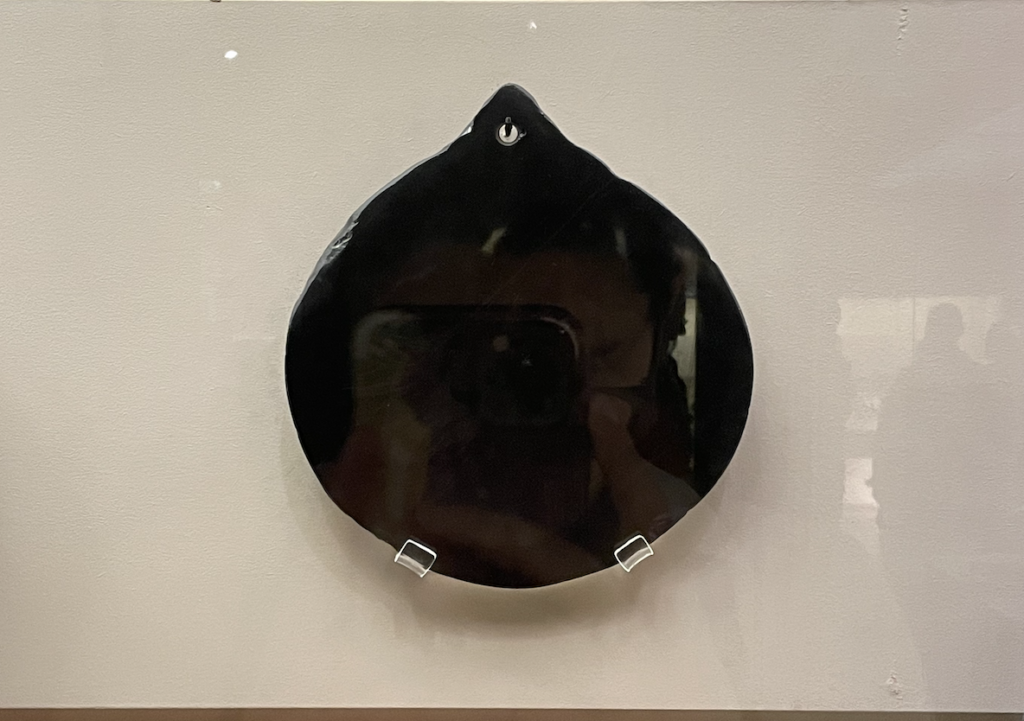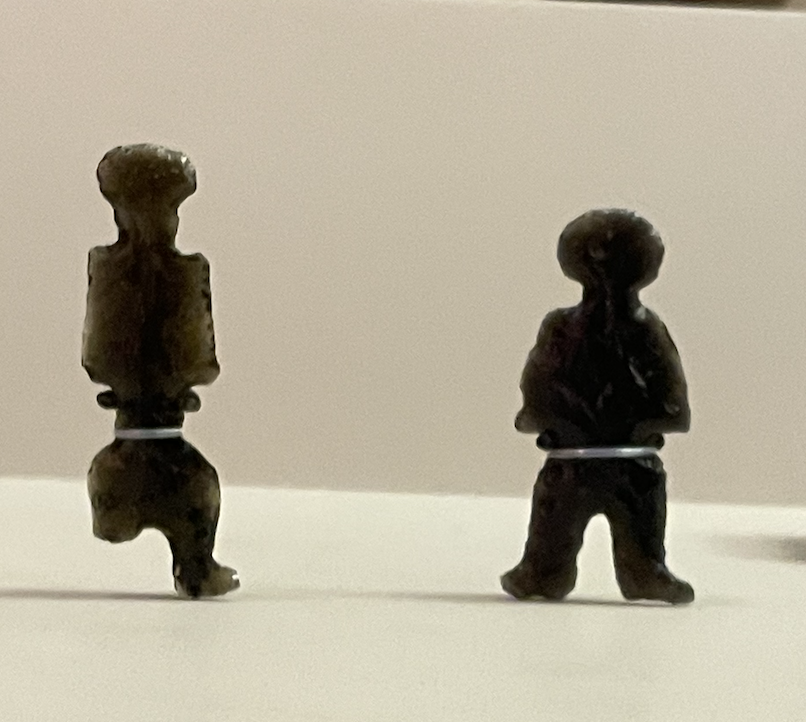Greetings from London! I have spent some time in England at the British Museum specifically looking at objects, like John Dee’s magical mirror, to explore how obsidian objects that were stolen or bought by Europeans are treated and categorized in an institutional landscape. Dr. Dee’s mirror sits in room 1, the most accessible space in the museum. It sits in a room that supposedly is now dedicated to righting the wrongs of the British Museum, revisiting its “impact on the transatlantic slave trade” and “exploring different perspectives”. The museum asks visitors to go to its website to learn more. It really feels like a highlight reel of the most fascinating objects the British stole, full of Babylonian amulets, Egyptian mummified remains, and other things from around the world, such as John Dee’s magical mirror, which I have extensively researched for this project. Staring at myself reflected twice, first in the museum glass case, and then again in the actual mirror is disorienting. Seeing myself reflected in the obsidian is also a tricky feeling because on one hand I would love to touch it, speak to its makers about their craft, and take it outside to see it in sunlight.
On the other hand, I wish it wasn’t here at all, and was instead in Pachuca, where it was made. This conflict between a desire to use obsidian while being respectful of it as material is something I’ve struggled with for the entirety of this project. Furthermore, it feels odd to have to travel to London to learn about obsidian found in North America. The display for the mirror is incredibly revealing. Supposedly, “the similarities between religious objects and practices from different cultures were examined and used during the Enlightenment to create a new, integrated history of human religious thought and belief”. I would argue that from my research these objects were appropriated and fetishized by white, rich Europeans to practice “occult” behavior/practices, and “play” with other cultures’ sacred objects. They were used to summon spirits and angels at the behest of Queen Elizabeth, which contradicts my research as to how the obsidian mirrors would be used in Aztec societies. But, that is not as interesting as the intrigue generated by a Western fascination with ideas of the occult and Othering non-Christian religions/religious artifacts. The mirror is called a “Mexican Aztec cult object, used for conjuring up spirits”. What does it mean to be a cult? What is a religion versus a cult, and why is the distinction drawn so heavily in the British Museum, especially with non-judeo Christian groups?
In contrast, inside the North America / Mexico room, generously funded by JP Morgan Chase, a larger obsidian mirror and two small obsidian figurines sit towards the back wall. It makes me wonder: is obsidian important as a material, or because it was touched by imperialism/from a distant land? It is unspecified when these obsidian objects arrived at the museum, and from unclear circumstances, whereas the provenance for Dee’s mirror is clearly stated on the museum plaque, which arrived at the hands of the museum in 1966 from its previous home at Strawberry Hill. Why must the importance of this object be because it was used by John Dee? Why isn’t obsidian inherently beautiful and important in the eyes of the curators of the museum? How do ownership and provenance impact an object’s spacial placement in a museum, and visitors’ perception of them?



